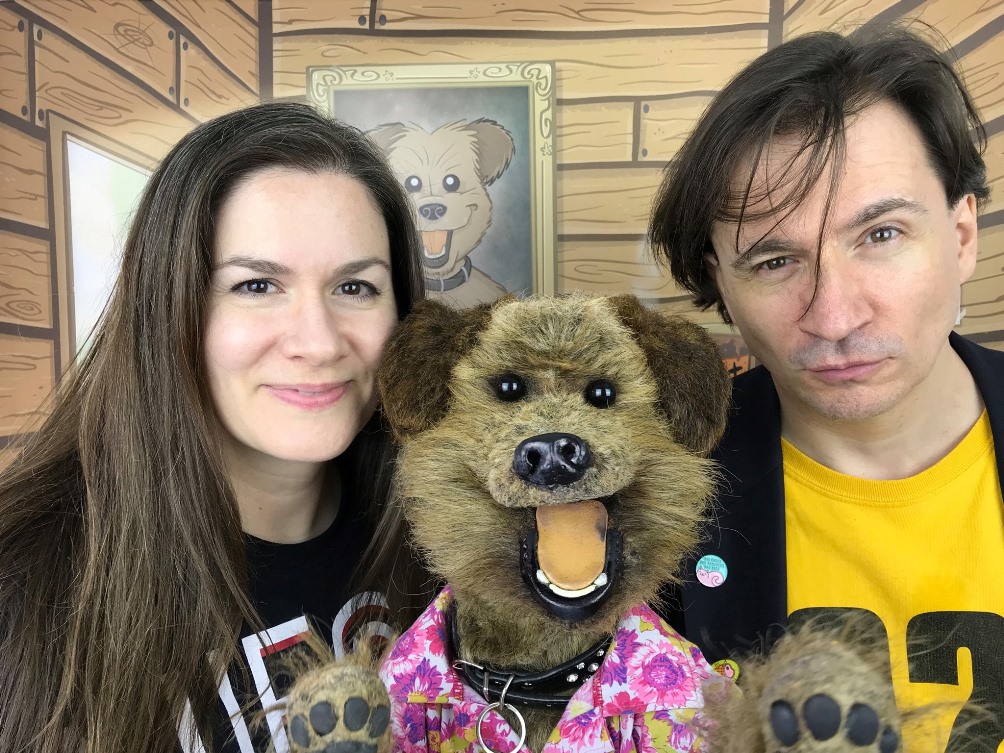
Sibling duo SPRAY continue their adventures in the subversion of pop with their new ‘Untitled Covers Project’.
Ricardo Autobahn and Jenny McLaren first terrorised the mainstream as members of THE CUBAN BOYS who topped John Peel’s Festive 50 with ‘Cognoscenti vs. Intelligentsia’ aka ‘The Hamster Dance’ and took on Cliff Richard’s ‘The Millennium Prayer’ in the race to be the 1999 Christmas No1, only to lose…
However, their main project was SPRAY, set up to ride on an anticipated resurgence in synthpop with two albums ‘Living In Neon’ and ‘Children Of A Laser God’ issued respectively in 2002 and 2007. Finding a home at US label Ninthwave Records, just about the only record company in the world at the time interested in anything synthy that even HEAVEN 17 signed to them for the release of ‘Before/After’ in 2005, as it turned out, no-one was interested in either SPRAY or HEAVEN 17. It was left to LA ROUX to cash-in on the synthpop revival with a No1 single in ‘Bulletproof’ in 2009 and a Grammy for ‘Best Dance Recording’.
SPRAY would not return until 2016’s ‘Enforced Fun’ and since then, they have been regularly releasing albums with the most recent being 2021’s ‘Ambiguous Poems About Death’. Since the start of 2022, the sister / brother pairing have been releasing a cover version per month to build a new collection of work. So far, there have been reinterpretations of THE DETROIT SPINNERS, BLINK182 and KISS as well as ‘Diamond Lights’, the surprise 1987 hit by England footballers Glenn Hoddle and Chris Waddle!
Over a game of Vintage Synth Trumps, Ricardo Autobahn and Jenny McLaren chatted to ELECTRICITYCLUB.CO.UK about dragging seemingly incongruous songs from yesteryear kicking and screaming into the SPRAY Universe and how electronic acts covering DEPECHE MODE is not a particularly good idea…
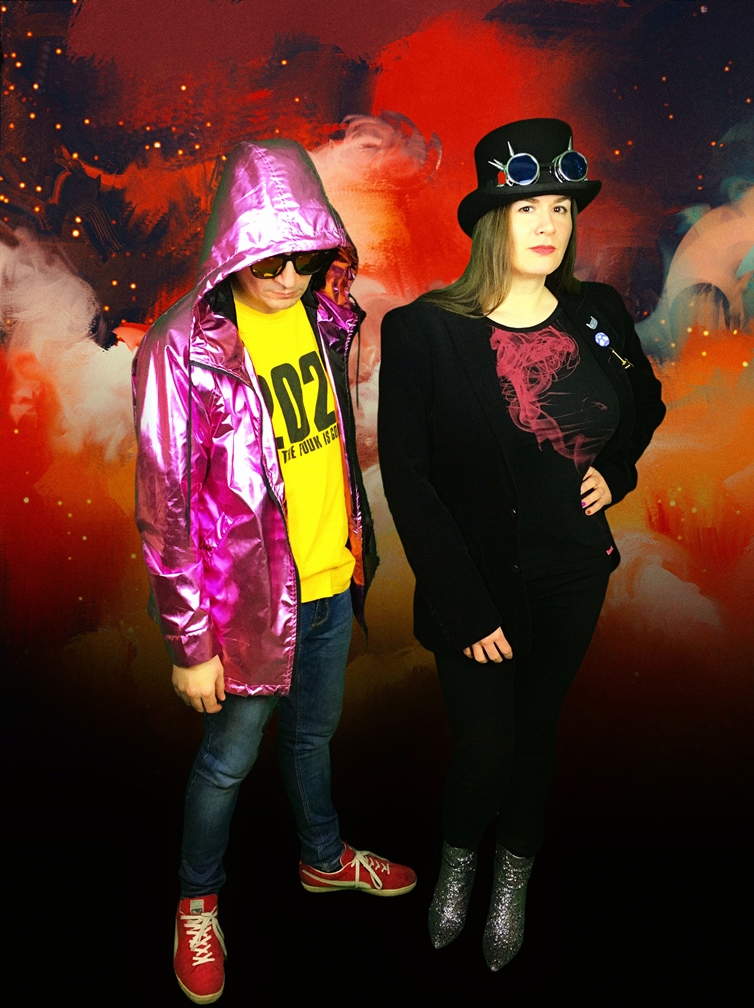
The first card is a Korg MS20, as used by BLANCMANGE on ‘Feel Me’…
Ricardo: I’ve always liked BLANCMANGE without ever being a big fan of them, they’re one of those bands, a bit like CHINA CRISIS. You can’t imagine them being someone’s favourite band. I always thought they had a great sense of rhythm and got World music into synthpop in a more authentic way than most people. I like Neil Arthur’s solo songs as well, I love ‘I Love I Hate’ which is fantastic.
LADYTRON used MS20s too and started around the same time as SPRAY back in 2000, ELECTRICITYCLUB.CO.UK has always credited them as being the first of the newer wave of synthesizer bands, as opposed to electronic dance acts…
Ricardo: Of all the modern synth acts that aren’t EDM, LADYTRON seemed to be the most melodic and threw in the most over-the-top production gimmicks and things, people at the time seemed to think themselves too cool to use certain sounds whereas LADYTRON were happy to do what sounded great, that’s what I always liked about them. But what I always hated about them, which was something I hated about all synth acts of the 21st Century is that when THE CUBAN BOYS were kicking around, we tried to get people interested in SPRAY; we said to people that there was going to be this big synth revival but nobody listened to us or took us seriously… I was irate that other synth acts made it big in the mid-noughties other than SPRAY, one of them was LA ROUX! *laughs*
Jenny: Oh yes… *laughs*
Ricardo: I said to THE CUBAN BOYS’ manager that there was going to be this big synth revival coming but he poo-pooed it and laughed at me… he went on to manage LA ROUX, leaving us in his wake!
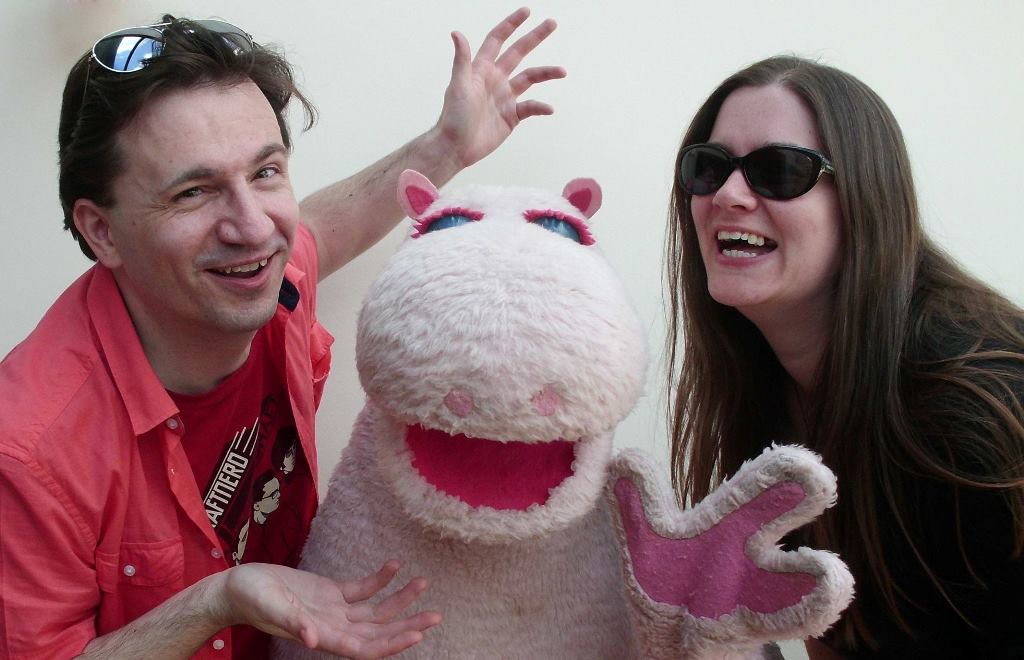
One of the things that struck me most about LADYTRON was girls were singing lead vocals on synthy stuff and it wasn’t a blokey thing anymore…
Jenny: Definitely, yeah, I think female voices always sound better generally on pop and electronic music, I enjoy a lot of rock music, men on that is fine, but the more women, the better as far as I’m concerned!
Yes, male voices just don’t grab me that much anymore on synth based music because it was done to death back in the day…
Ricardo: There a few things here; they all tried to sound like Dave Gahan, there was that synthpop voice which was sort of deep and nasal, and everybody wanted to be like DEPECHE MODE. But there is this thing about frequency response, if you’ve got your kick drum and bass drum in the low frequencies, you’ve got your doomy industrial DM synths in the mid-range, if you have a mid-range voice, then everything’s concentrated to those frequencies. BUT if you bring a female voice in on top of that, you’ll spread the spectrum.
Yes, in the old Synth Britannia days, you’ll have done that with a higher end synth melody which is WHY that era of music worked… like let’s swing it the other way, what about blokeys who sing falsetto? That to me is old hat now!
Ricardo: We are big SPARKS fans so we’ve got used to the falsetto but Russell Mael always realised it was a gimmick and his tonal quality changes left, right and centre from low to high. There was a period in late 80s pop when singing in falsetto was a by-word for “soul”, the worst offenders being BIG FUN in that ridiculous way! *laughs*
Jenny: It was just showing off… but one of my favourites with falsetto is Morten Harket from A-HA, he showed his range very much like Russell Mael; Morten and Russell know how to place certain types of singing in the music, how certain types of voices suit certain types of songs.

That’s a good point Jenny, Morten Harket, Russell Mael, Jimmy Somerville, Andy Bell, they knew how to do it, there was a degree of restraint, they knew where to place it, whereas others do that overblown thing…
Ricardo: This is WHY those singers you have mentioned were successful. Morten Harket knows which songs to sing high and which songs to sing low on, so you’ve covered the frequency range.
If you sing in the same frequency range in ALL your songs, regardless of what your music is doing, people will get sick of it very easily.
A good example is A-HA ‘Summer Moved On’, Morten Harket does a 21 second falsetto note in it, but it’s not the centrepiece on the bridge that it’s in, it’s there but it’s not pushed in your face, it’s not the dominant part…
Jenny: Yes, it just happens and then you go “OH MY WORD, THAT’S INCREDIBLE” but mixed in with the rest of the music, it’s perfect. It’s an example of it being done well.
Another card and it is a MemoryMoog…
Ricardo: I’ve never had a Moog, but I have been tinkering with VIEON’s Moog Grandmother recently. It was very atonal, I was noodling and he was tinkering away and I felt like I was in Karl Bartos’ book *laughs*
It was a beautiful moment of things melding together in a ray of light, this is the sort of thing that makes music great, analogue synths that sound robotic but there’s humans playing them and it was great fun, I must get one! But the synth wasn’t THAT special to be honest, it’s good synth but I didn’t think I was playing a Stradivarius, it was good but they’re all the same!
Has the iconography of Moog meant anything to you as synthpop purveyors?
Ricardo: It IS a cool name, if I was to buy one, it would be to look cool on stage. I bought one of those reissued Korg ARP Odysseys just because that Helvetica font looks really good on stage. We wrote the song ‘Félicette (Space Cat)’ on that.
Jenny: Yes, Moogs are the cool one…
This highlights how iconic these synth facias with “Moog” and “ARP” are from ‘Top Of The Pops’ because you have “Fairlight” on your live keyboard controller…
Ricardo: I tried to borrow a Fairlight from someone but they wouldn’t let me take it down from their loft, so next best thing, I customised my keyboard to look like a Fairlight… now who had done it before me???
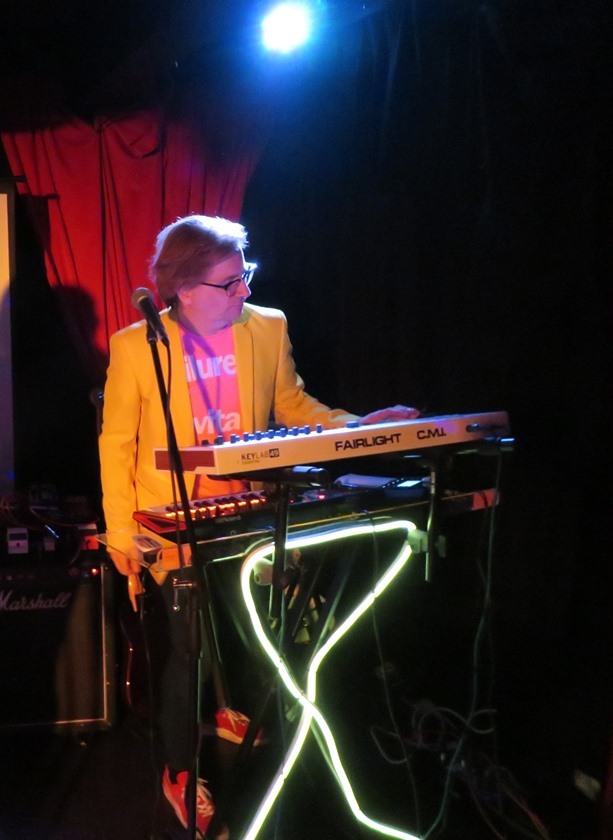
Yes, it was Martin Gore who put “Fairlite” on a Casiotone MT-30…
Ricardo: I didn’t know that! I think it was inspired by Ron Mael from SPARKS who put “Ronald” instead of Roland on his keyboard… the thing about that is it gets across SPARKS’ sense of humour very easily. That’s why I loved SPARKS so much and why they are such an influence on SPRAY. They have a sense of humour that is sadly lacking in pop music these days, I don’t mean novelty acts or comedy bands but artists who include jokes and light hearted asides in their songs…
Jenny: …and write songs that aren’t necessarily about girls and boys and love and that, they talk about other interesting things that happen in the world.
Ricardo: Having Ronald in Roland font on his keyboard was a very good indicator that they were not just any old band.
Just out of interest, where do you stand on people wearing T-shirts of synths they don’t own, who are often those who complain about girls who wear T-shirts of bands they don’t listen to?
Ricardo: Oh it’s fine, it’s aspirational isn’t it! It’s like wearing a T-shirt with a Ferrari logo on it or British Leyland! *laughs*
Again, it’s like Ronald and Roland, it’s showing your personality, what you’re interested in, what you care about and what you maybe don’t care about. I’ve worn T-shirts with “Muzak” written on them, I don’t like Muzak a great deal but I love the concept of Muzak and I like the word and the font they use as well.
I bought an Akai T-shirt to wear ironically cos I have no Akai equipment, it just looked good…
Ricardo: We bought two Akai S5000s in 1999 with THE CUBAN BOYS and we made our entire album on them…
Jenny: Oh yes!
Ricardo: They were very basic, they didn’t have any external memory, we just used the floppy drive to load the samples and it was a massive thing. It cost about two and a half grand back then, I remember saying it was more expensive than the car I was driving at the time! We were using the Soundblaster 16 card in a PC to do the demos which was how the John Peel stuff was done, so to move to the Akai was mindblowing. But again to reference Karl Bartos, when you have a limitless horizon, your creativity suffers and that was a problem too because we didn’t have any boundaries to work with.
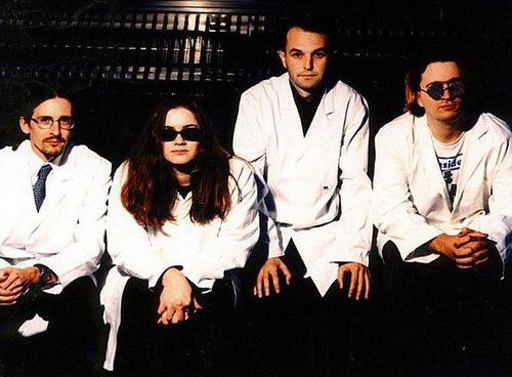
A point I’d like to bring in about the whole sampling issue in reference to Karl Bartos was he says in his book that ‘Numbers’ was inspired by the intro beat to ‘Do Ya Wanna Dance?’ by Cliff Richard, only he programmed his interpretation into his machine, got it slightly wrong and out came as ‘Numbers’. But today, you would actually sample the beat of inspiration wholesale, and that defeats the object of any actual artistic creativity, there’s no individual variation or happy accidents now… that’s why I struggled with the ethos of sampling, I find it difficult to have an emotional attachment although I can appreciate the technical innovation…
Ricardo: The thing about KRAFTWERK in the 70s was it sounded robotic but was done by humans but after ‘The Mix’, it sounded like computer demos more than anything. So yeah, the pre-digital era is clearly the best era. With things like THE ART OF NOISE in 1985, sampling was very exciting from a technical perspective, there was ‘19’ by Paul Hardcastle as well. I’m not sure anyone has actually had an emotional response to ‘Close (To The Edit)’ despite it being fantastic. But that 1985 sampling sound got tired very quickly and it became “that thing” as a loop on a record rather building a record out of bits.
SPRAY are songwriters at heart, but when you heard KRAFTWERK for the first time, what did you actually think?
Jenny: I liked ‘The Model’ and ‘Computer Love’, but I didn’t relate to it enough because it wasn’t vocally exciting cos I enjoy a singalong. I do love them but my formative music was more vocal-led.
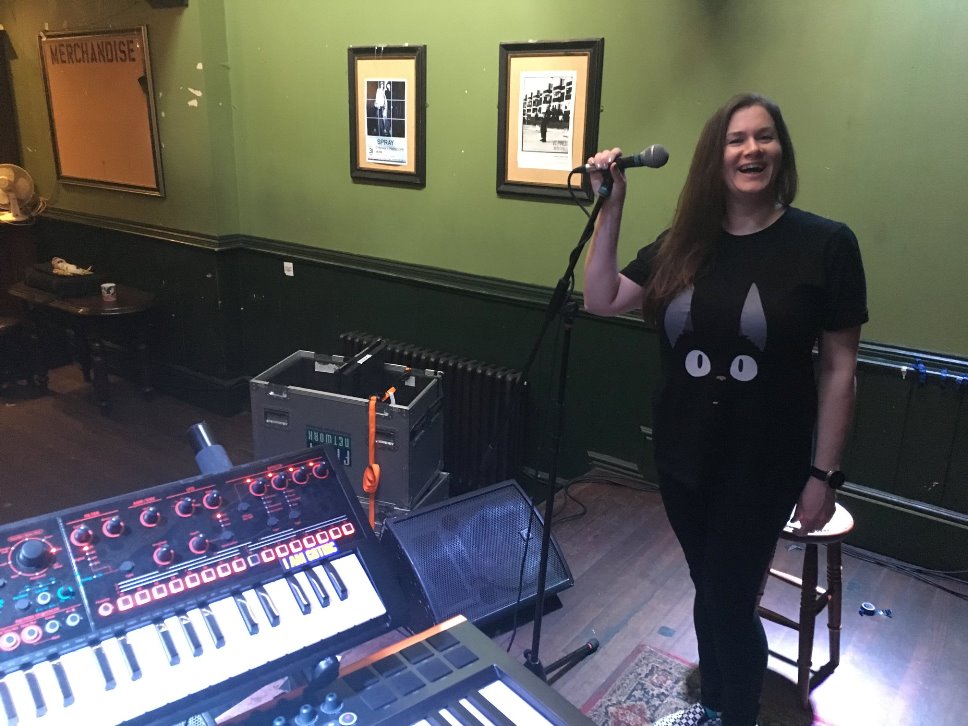
This is the point I’m trying to get at, my sister and my cousin thought KRAFTWERK went on a bit and just kept repeating the same words, so I understand why girls aren’t into KRAFTWERK…
Jenny: It’s not because I’m a girl, I think people might find it boring… *laughs*
Ricardo: But then you’re not a fan of the 12 inch mix either generally…
Jenny: It’s very rare that I will listen to a song that’s more than four and a half minutes… I was shocked to learn that the tracks on more than half of FAITH NO MORE’s ‘The Real Thing’ are five minutes and over, I don’t think I’ve got the capacity for that! I like a nice snappy pop song, Eurovision style, three minutes, on-off-done!
Ricardo: When we were doing THE CUBAN BOYS, we had very little interest in the project, we were more interested in getting SPRAY away. While we were having great success in the charts and EMI were happy, we were more about the pop songs that SPRAY were doing.
Weirdly, I’m in that zone, I find the whole 12 inch mix thing tedious, yes I’ve got a lot of 12 inch singles but only for the bonus B-sides… so back on the subject of songs, what inspired you to do a covers album?
Jenny: What was it that kicked it off?
Ricardo: We had these cover versions we’d recorded over the years but never released, mainly because we can’t be bothered to do all that licensing business! So it’s always just easier to put out original stuff on platforms. But then we did a Halloween cover for a radio show last year, ‘Come Back Haunted’ by NINE INCH NAILS for our friend Terri MacDonald’s ‘Cabinets Of Curiosities’ podcast… it was so easy to do so we thought, why not do a few more and this gimmicky idea of one per month was partly to keep our focus through the year and partly because it’s a good way to get stuff out without overloading people. There’s no real need for a new SPRAY album just yet *laughs*
Jenny: It’s keeps us posting stuff, especially for our ‘SPRAY Social Mondays’ doing little things to keep us in the public eye… public yeah, the three people who follow us… *laughs*
…and who come to ALL your shows! *laughs*
Ricardo: God love ‘em! *laughs*
Jenny: It gives them something to look forward to each month and other people then get into the idea…
Ricardo: It’s the classic situation, as much as PET SHOP BOYS put out an album and four singles over a year, that’s just not like that anymore, it’s all about content and driving the algorithm or what have you. So we thought this was a fun idea to make sure nobody forgets us! *laughs*
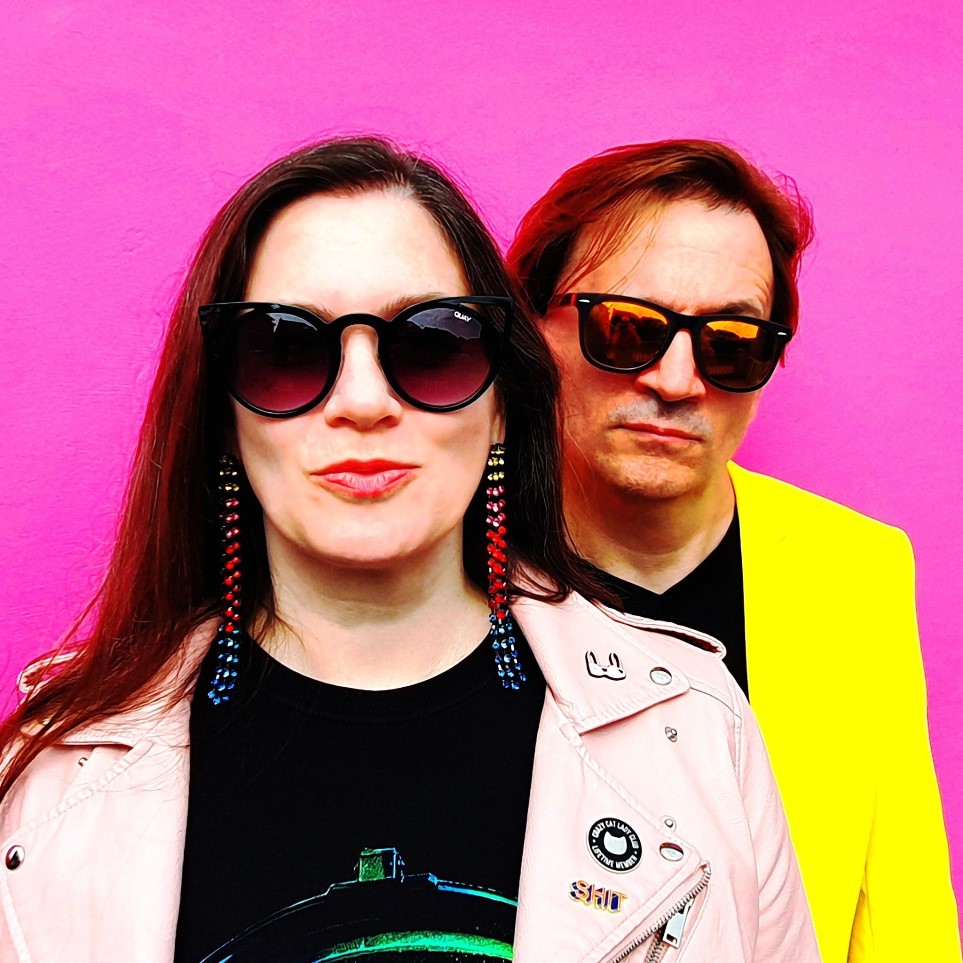
So how does one choose a suitable song to arrange in an electronic pop aesthetic, one that is not a bloody DEPECHE MODE cover? *laughs*
Ricardo: It’s all very accidental apart from when we did THE OFFSPRING ‘Self-Esteem’ for the SPRAY live show, this was a few years ago. We did it because the chords are real Europop major chords, it sounds absolutely fantastic as a HI-NRG record.
Jenny: We deliberately don’t try and find electronic records to cover, we try and find things that we think might sound good as an electronic poppy record, would you agree?
Ricardo: I would agree but also we are arrogant enough to believe we can make anything sound good, so sometimes we will find something that is bloody atrocious because if we can’t make it worse, we’ve got to make it better! *laughs*
Having listened to the cover versions so far, what has been particularly interesting about the majority of the choices is they have a degree of familiarity but at the same time, they sound new, which is quite a difficult thing to pull off… a good example would be ‘The Rubberband Man’?
Jenny: It was in ‘Guardians Of The Galaxy’, I didn’t know it and you suggested it… so it’s one of those that’s in people’s consciousness but not overly, so it’s something we can remind people of very gently.
Ricardo: It’s 70s funk which we’re not into at all but it’s got those really pronounced dramatic chords in the chorus which are really poppy, which you can always tell will work in a synthy style.
So when you are recording a cover or any song for that matter, do you do the quality control yourselves or do you have some trusted confidantes who you will run things by?
Ricardo: NO! We never have trusted confidantes, if you do that, you’ll never release anything! We care, it’s all that matters, if anybody else likes it, then that’s a bonus as they used to say in the NME in 1991! *laughs*
I’ll do a basic arrangement of a track, then Jenny will record a vocal and then I’ll build something around it. So we get away from the original straight away, we try to forget what the original sounded like if we can…
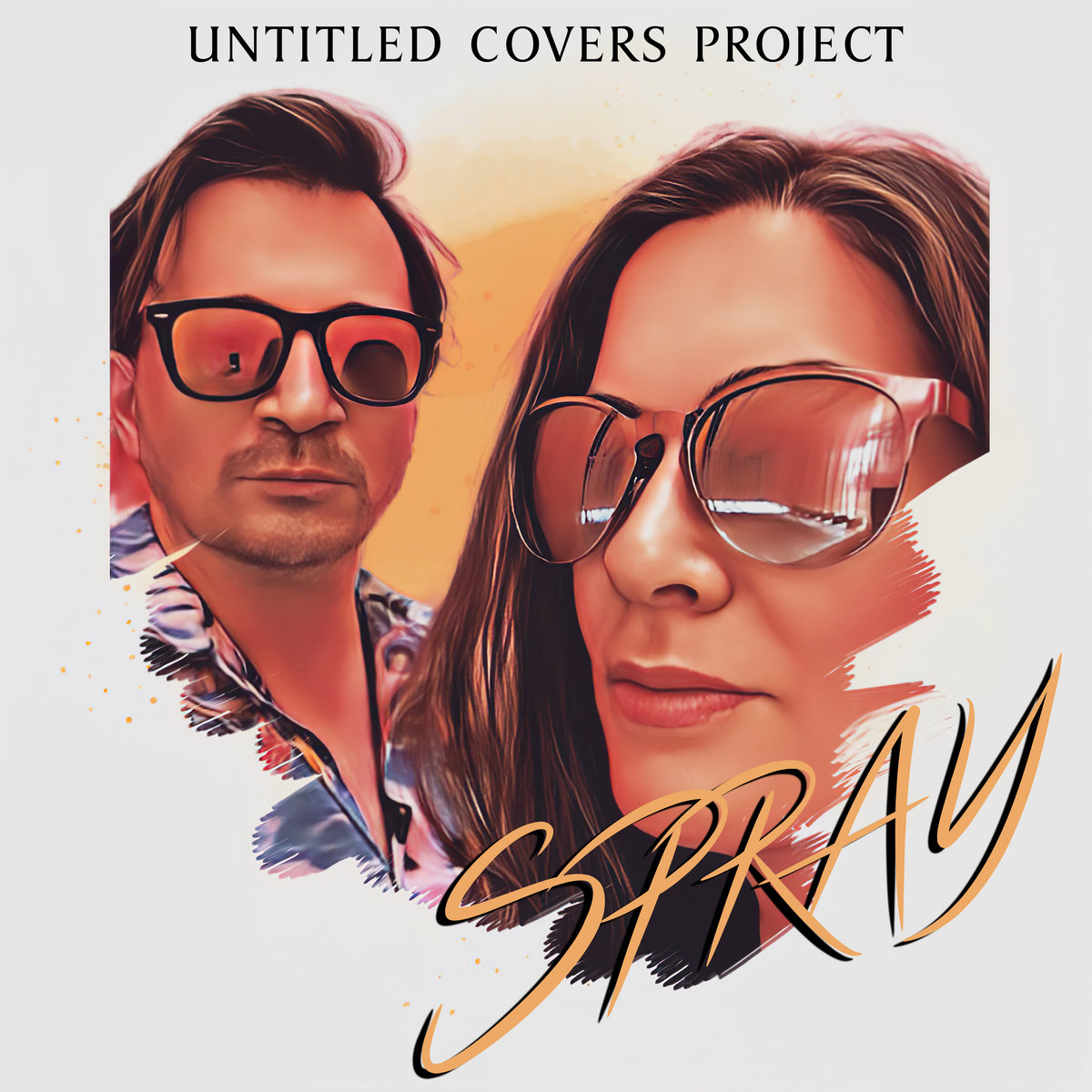
Is there a danger in forgetting the original that you could leave out what was good about it in the first place? For example, this British independent electronic artist did a cover of ‘Blue Monday’ recently, so mistake No1, he picked an electronic song. Then he tried to change the familiar elements of it, so the rhythm structure lost its funk as it become a straight four. Thing is, despite it being mechanical, NEW ORDER’s ‘Blue Monday’ has a weird groove because of the way Bernard Sumner sequenced those off-notes that just sat there. So this cover now has no groove and because he did away with the familiar hooks, he made up his own, which were frankly not very good!
Jenny: Yes, you want to put your own spin on a cover version, you have to give it a different feel, otherwise there is no point at all. With FAITH NO MORE’s ‘We Care A Lot’, it features a rap so it has no tune whatsoever so I did try to give it a more melodic slant. It was trying to change it a little but not change it, just add to it. You can change little bits and add little quirks, like I sing with an English accent so a lot of the American things we do, there’s a different thing straight away.
My funny FAITH NO MORE story, well it may not be funny to you, is when I first heard ‘Midlife Crisis’, I thought the verse was in German! I was confused, for years I thought they were from Germany! *laughs*
Jenny: If you can’t place immediately where a band is from, I think that can only be a good thing! *laughs*
How did ‘That’s What I Want’ by Lil Nas X come to be selected?
Ricardo: I love it when I hear something I like on Radio1 because it means I’m not old yet, Ava Max is also great, it’s refreshing and I sometimes think SPRAY can still have a hit if we sound like Ava Max these days but we haven’t quite managed that yet!
Jenny: She’s fab!
Ricardo: Covering Lil Nas X proves that we still listen to pop radio…
Jenny: It’s R ‘n’ B but quite poppy, he’s quite genre busting, that ‘Old Town Road’ when he sampled Miley Cyrus’ dad, I didn’t really like it so I didn’t really appreciate him until he was doing the pop stuff. His videos are incredible, he’s very risqué shall we say…
So here’s another card, a Korg 900PS, do you use Korg?
Ricardo: I bought a Korg Wavestate just before lockdown, it’s like a John Shuttleworth keyboard but made by NASA! You can do your one-fingered accompaniment, drums on one key, bassline on another. The idea was that we’d be able to do a whole show on this one synthesizer with no backing tracks. It would be the closest thing to SPRAY Unplugged, but with just one plug! If you open it up, there’s nothing more than a raspberry pie in there *laughs*
You have covered some more familiar tunes for the project, one of which is KISS ‘I Was Made For Loving You’…
Jenny: What a song!
Ricardo: Anybody that says they don’t like rock music, listen to that! That’s my kind of rock, DISCO ROCK!
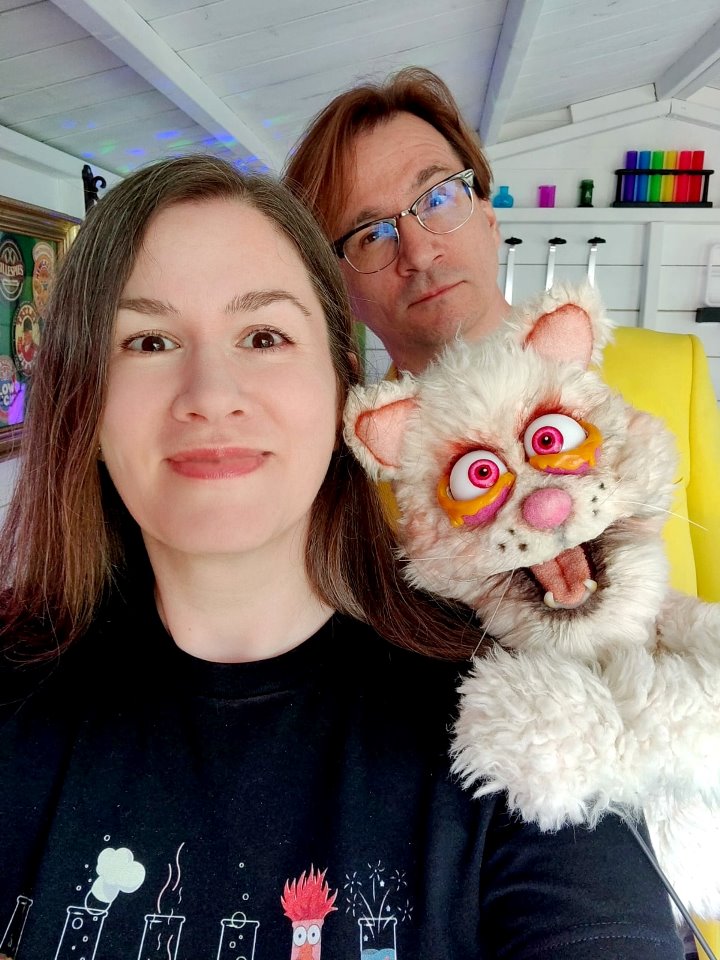
It’s not really a typical KISS track though is it? But perfect for an electronic pop cover! I first knew the song from German band QUEEN OF JAPAN’s electroclash version which appeared on a TOO MANY DJS mix CD…
Ricardo: I wish KISS had done more songs like that, I always think this of bands who have a hit with an unrepresentative song, why not write a load more songs in that style? They could have a hit factory! KISS never really had hits in Britain until the late 80s…
Yeah, they had a hit with ‘God Gave Rock & Roll To You’, which funnily enough was a cover…
Ricardo: ARGENT wasn’t it, it was bloody terrible! *laughs*
Jenny: That was the one from ‘Bill & Ted’s Bogus Journey’…
You’ve done a sparse reinterpretation of BLINK 182 ‘All The Small Things’…
Ricardo: This is one of Jenny’s favourites from yesteryear with her being the rock fan…
Jenny: I do like a lot of rock and as I mentioned earlier, it’s more difficult to do an electronic pop cover of electronic pop songs and make then your own. ‘All The Small Things’ is pop punk and its fast, so to slow it down like that, you have be careful not to do that twee girl with ukulele thing like a John Lewis ad, but you can do that and do it well, so that you can hear the song itself rather than all the fireworks.
Ricardo: We first recorded ‘All The Small Things’ about 20 years ago as a demo or the first SPRAY album and forgot about it. One day it turned up on the hard drive, we took the vocal acapella and experimented around it to see what we could come up with, but in the end, we had to re-record the vocal due to the earphone bleed! Using the vocal first and then shaping the music second was why it’s such an unusual cover.
Jenny: I think it came out really well, it’s one of my favourites so far.
Bringing Karl Bartos back into the conversation, he did a rather radical speeded up vocodered electronic cover of Eddy Grant’s ‘Baby Come Back’ as ELEKTRIC MUSIC…
Ricardo: I remember at the time being very excited at this because ‘The Mix’ was in 1991 and Karl Bartos had left by then, but then in 1992, the NME charity cover compilation ‘Ruby Trax’ came out and ‘Baby Come Back’ was Herr Bartos’ comeback on that. However, it was pretty awful… c’mon Karl, spend more than an hour on it please! It clears up why KRAFTWERK were so unproductive, they couldn’t be bothered really, they were too picky! They spent a week writing ‘Electric Café’ and 5 years mixing it! *laughs*
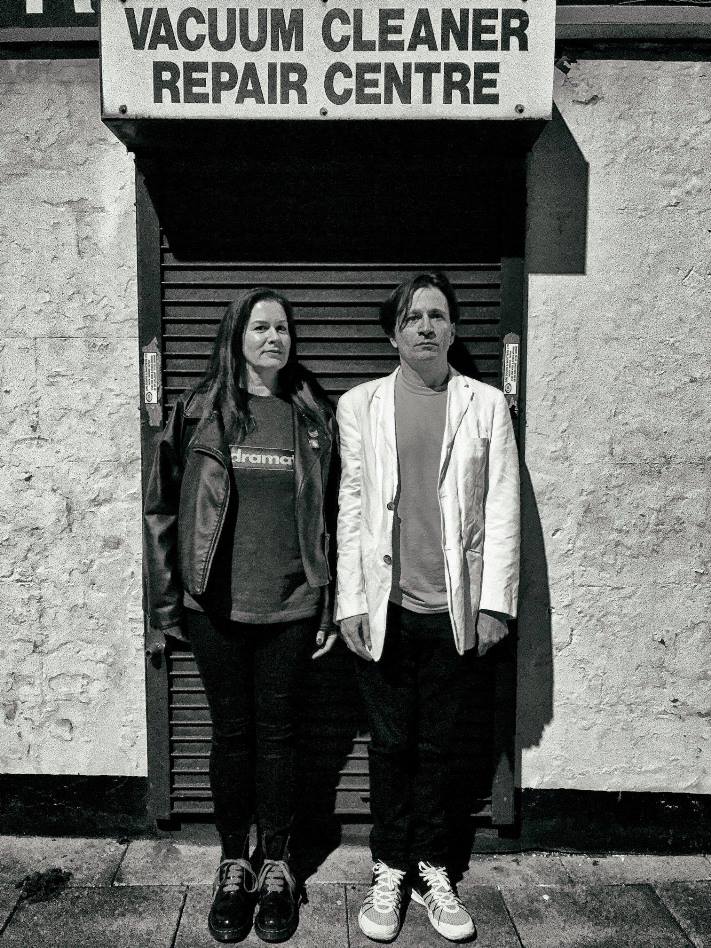
‘Gentle On My Mind’, as made famous by your late friend Glen Campbell, what did you think of Gil Trythall’s radical Moog modular version for ‘Switch On Nashville’ from 1972?
Ricardo: That reminds me of what I said earlier that of that roboticness but with a human feel, I do like 16ths and stuff as heard on ‘No1 Song In Heaven’, I think it’s marvellous, you can hear humans playing but it’s still technical.
Now Glen Campbell did quite a few Jimmy Webb songs, you have covered ‘The Highwayman’ before…
Jenny: Yes, we’ve done it live and it’s gone down incredibly well…
Ricardo: Originally in 2003-2004, we were going to record it as SPRAY featuring Glen Campbell. But it never came to pass because I don’t think he quite understood what we wanted him to do, which was record vocal and send it to us. My previous recording session with him to do ‘Rhinestine Cowboy’, I flew over to his house and I think he assumed that was what I was going to do this time! *laughs*
So will ‘The Highwayman’ come out on this cover project?
Ricardo: It’s on the Bandcamp download version of ‘Children Of A Laser God’.
What else is on the cards with these covers?
Jenny: There’s five more to come… one is ‘Love Rears Its Ugly Head’ by LIVING COLOUR, it’s very funky and jazzy, we have yet to get it finished but about a month ago, it came on in the car and I was like “oh my God, we need to do this…”
Ricardo: This should be a successful one cos I hate the original! I always say that about earnest American rock. So after Jenny sends her vocal back and I get my hands on it, it should be a little bit more interesting to get away from the original.
Jenny: I think the vocal will sound very different…
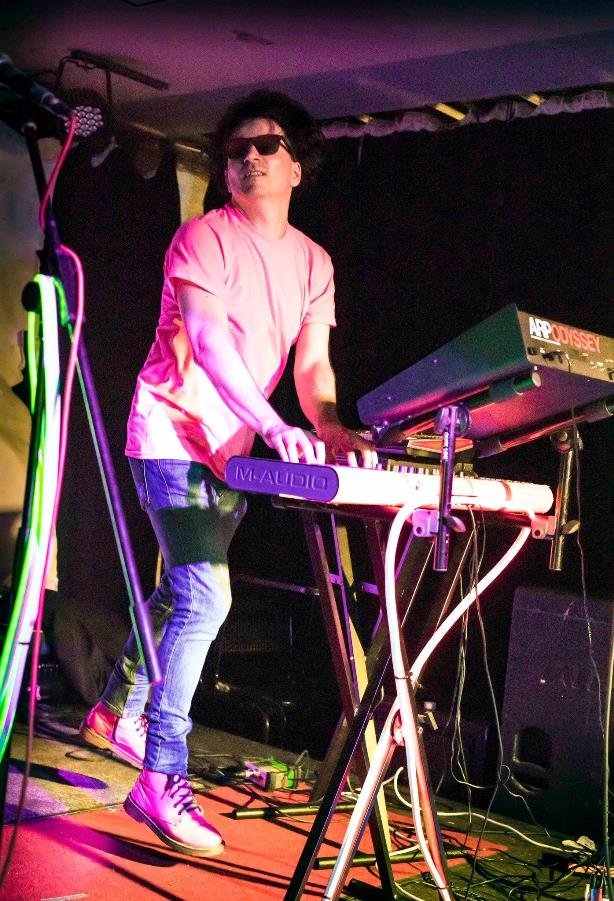
What about the other ones?
Ricardo: We’ll probably put out that NINE INCH NAILS one, ‘Come Back Haunted’ to tie in with Halloween but ‘Born To Be Alive’, the old Patrick Hernandez disco record is in the running. We started it a few years ago but never finished it, but I did get a guitarist to play the riff for me so as it’s on file, we may as well use it.
Did you know who programmed the Roland System 100 sequence on ‘Born To Be Alive’? To give you a clue, an electronic music fan, you’ll probably guess the band he was because they were connected to SPARKS!
Ricardo: It’s not TELEX is it?
Yeah, Dan Lacksman from TELEX!
Ricardo: I had no idea! Right, we’re definitely doing that then! Now, I want to do a cover of my favourite Italo disco song which is ‘The Different Story’ by Peter Schilling, It was produced by Michael Cretu aka ENIGMA. But we can’t do it because every time we try, it sounds either exactly the same as the original or to my ears, slightly worse!
I think Italo disco covers wouldn’t work as SPRAY are spiritually not that far removed from the form, it would be like you doing PET SHOP BOYS covers although Jenny singing would give it a twist…
Jenny: That would be the only thing though wouldn’t it? But we’d like to do ‘No1 Song In Heaven’ live, but that would be something we wouldn’t want to replicate unless we could do it properly.
Ricardo: So my three favourite songs are ‘The Different Story’, ‘No1 Song In Heaven’ and ‘Video Killed the Radio Star’, over the years I’ve tried to cover all of those but it just doesn’t work…
Jenny: There’s no point! *laughs*
Another card, and it’s an EMS Polysynthi, described by Vince Clarke as the worst sounding synth ever made…
Ricardo: Didn’t Jean-Michel Jarre use an EMS? I like the colours on it…
Yeah, it’s the best thing about it, tried one at college, no matter what knob you twiddle, it still sounded rubbish!
Ricardo: It’s cool, it would look good on stage and that’s why I’d get one! *laughs*
So why have you covered Chas & Dave’s ‘Ain’t No Pleasing You?’
Ricardo: Someone suggested it as a joke but we did it anyway…
Jenny: I think it was Terri MacDonald…
Ricardo: On her ‘Cabinets Of Curiosities’ podcast, she had a SPRAY Song of the Week, these little internet radio shows that spring up out of nowhere, some are quite good so we associate ourselves with them like Terri’s.
Jenny: I miss her show, it was very good.
Ricardo: So she suggested Chas & Dave, we changed the rhythm to 4/4 and it worked out ok.
Football songs, so why ‘Diamond Lights’ and not ‘Ole Ola’ or ‘World In Motion’ or ‘Top Of The World’ which was utter rubbish despite being co-written by Johnny Marr? *laughs*
Ricardo: All football songs are terrible, including ‘World In Motion’ , yes it’s the best football song but it’s the worst NEW ORDER record, the lyrics are appalling !
Jenny: But ‘Diamond Lights’ is fabulous…
Ricardo: It’s such a strange record to have been made in the first place, that why I’ve always liked it, it was released on Radio Shack!
So it was connected to Ian Levine?
Ricardo: He wasn’t involved but it’s a late 80s gay disco record by two footballers, there was only the most oblique reference to football in the lyrics, what a strange thing to be a success. They were called Glenn & Chris, but Hoddle & Waddle would have made a better moniker…
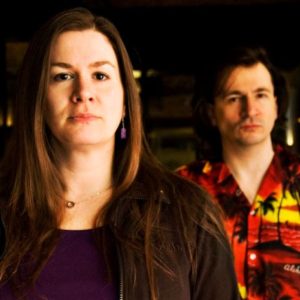 This isn’t really a football record as such as it’s not about winning or beating someone, this is more Ant & Dec as opposed to PJ & Duncan; it was never as good when PJ was with Harvey cos the stuff was really gloomy and miserable…
This isn’t really a football record as such as it’s not about winning or beating someone, this is more Ant & Dec as opposed to PJ & Duncan; it was never as good when PJ was with Harvey cos the stuff was really gloomy and miserable…
Ricardo: I used to have a really big collection of Ant & Dec and PJ & Duncan CD singles, they used to sell them dead cheap for 99p! I sold them as a job lot on eBay and some bloke came round in a Range Rover and took them off my hands, good times! Back to ‘Diamond Lights’, we did it totally straight, there’s no irony involved, we covered it as a fantastic pop song.
Jenny: Oooh, I’ve only just seen it but Glenn Hoddle and Chris Waddle have commented on Twitter about it.
Ricardo: Them both commenting leads me to believe that they have been talking about it behind the scenes.
Jenny: But I think you sent it to them it to them *laughs*
So your process? When you decide to do say ‘Diamond Lights’, are you sourcing sheet music or working it out by ear?
Ricardo: I play by ear, I use my hands, but I play by ear! You work out the chords, programme them into FruityLoops and then forget about the original and start tinkering like you are writing an original song.
What advice would you give to electronic acts that are looking to do cover versions as an extra string to their bow or for publicity or whatever?
Ricardo: Well, nobody wants our advice, after 20 years, I couldn’t really offer any… but if I was to, gimmickry is not a dirty word. Do something that is not in your usual style but turn it into your usual style.
Jenny: I think that’s pretty much what I would say, but also, don’t listen to us because we don’t know what we’re doing! *laughs*
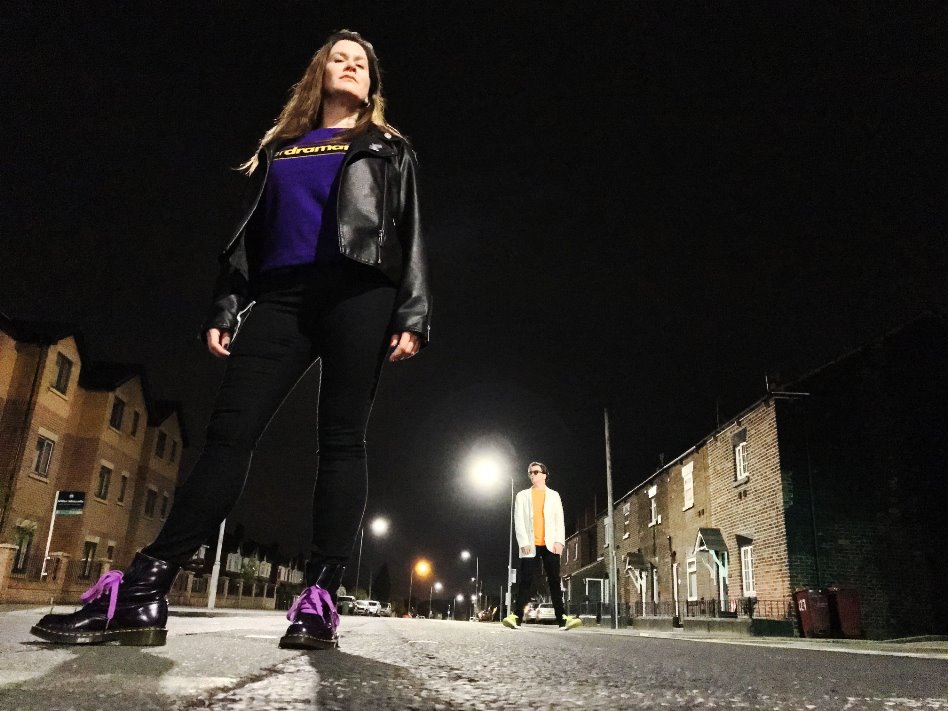
Final card, the Oberheim Matrix 12…
Ricardo: What a great name, if there wasn’t already a synth called the Oberheim Expander, I would name an album that, it’s such a glorious collection of syllables. I’ve a plug-in called OPX which is a knock-off of the Oberheim OBX and got all the VAN HALEN presets, it’s got RUSH and the ‘Tom Sawyer’ bass, and the ‘Love Beat’ organ which was used by THE SPACE BROTHERS in the dance hit ‘Shine’.
ELECTRICITYCLUB.CO.UK gives its warmest thanks to SPRAY
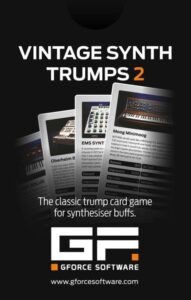 Updated at monthly intervals, ‘Untitled Covers Project’ is available as a free download from all good newsagents and directly from
Updated at monthly intervals, ‘Untitled Covers Project’ is available as a free download from all good newsagents and directly from
https://spray.bandcamp.com/album/untitled-covers-project
http://www.spraynet.co.uk/
https://www.facebook.com/spraynet/
https://twitter.com/spraypopmusic
https://www.instagram.com/spraypopmusic/
Vintage Synth Trumps is a card game by GForce that features 52 classic synthesizers
https://www.juno.co.uk/products/gforce-software-vintage-synth-trumps-2-playing/637937-01/
Text and Interview by Chi Ming Lai
23rd August 2022
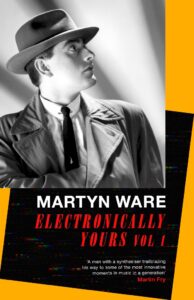 ‘Electronically Yours Vol 1’ by Martyn Ware is published by Little Brown as a hardback book, e-book and audio book, available from the usual bookshops and online retailers
‘Electronically Yours Vol 1’ by Martyn Ware is published by Little Brown as a hardback book, e-book and audio book, available from the usual bookshops and online retailers
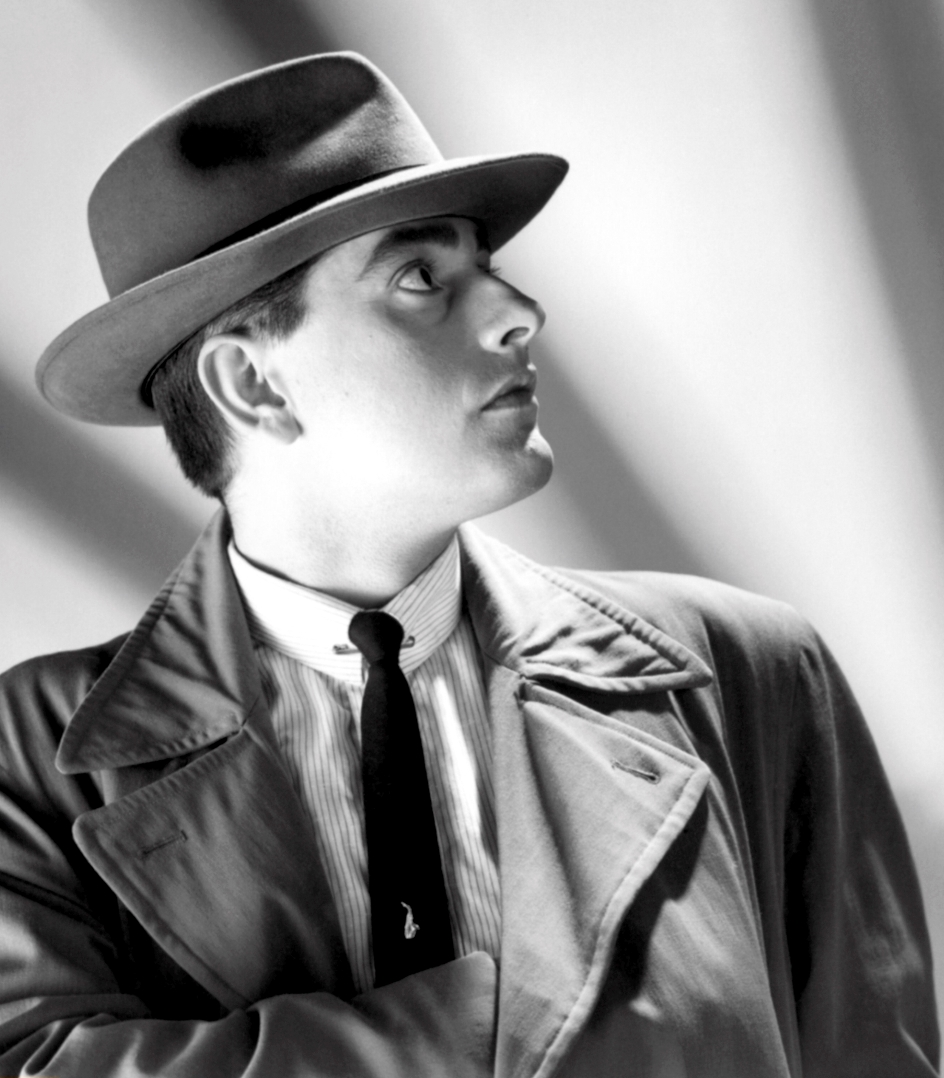
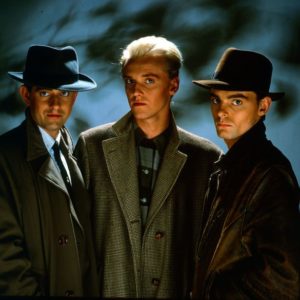
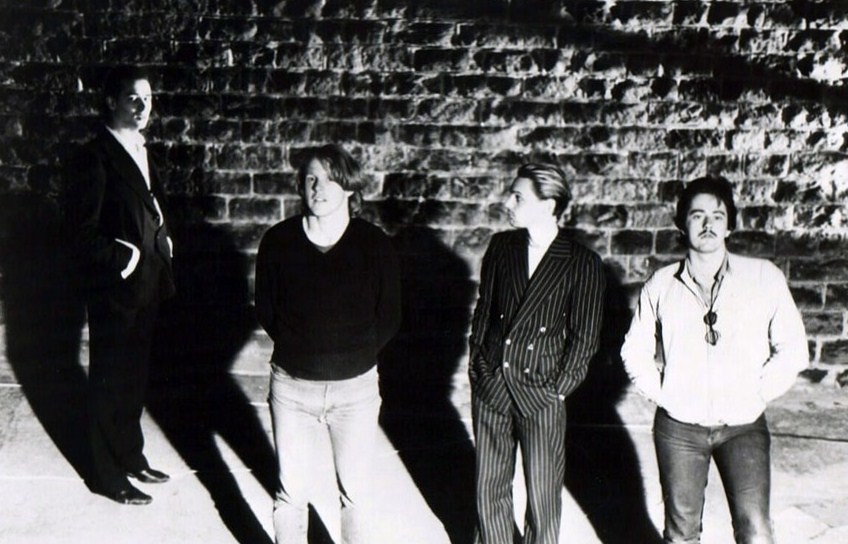
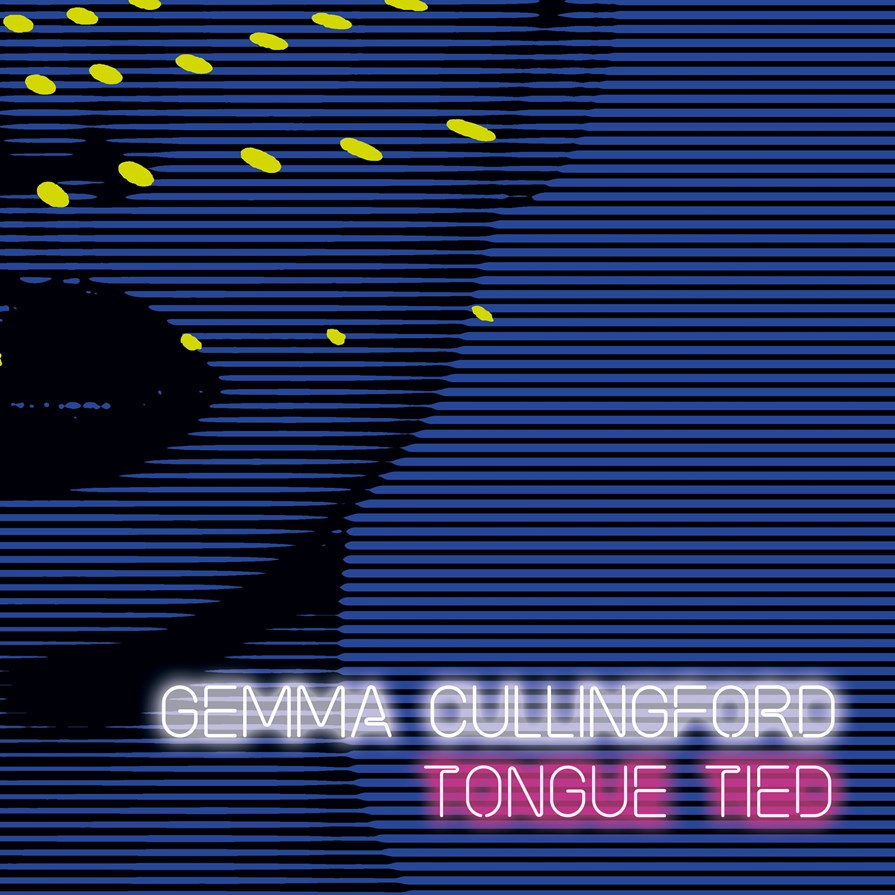

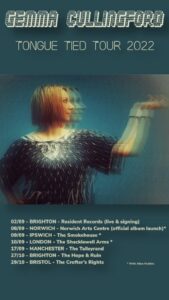
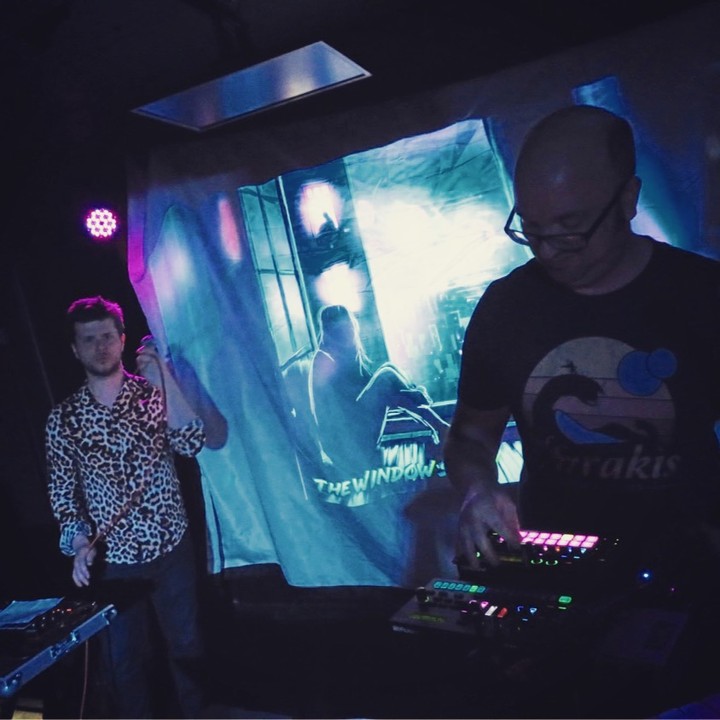
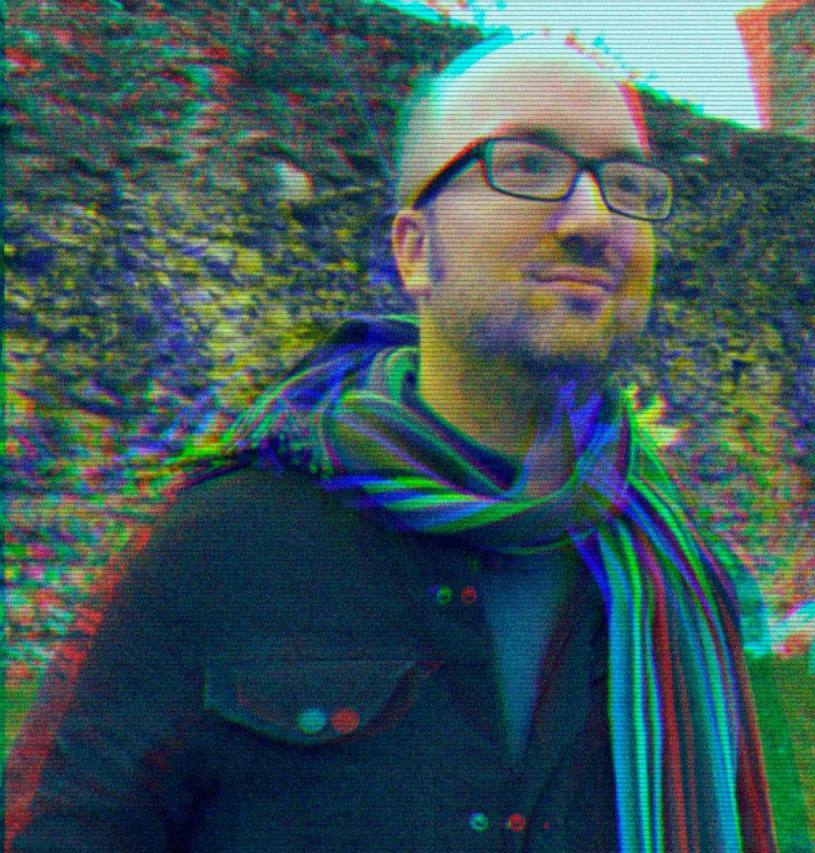
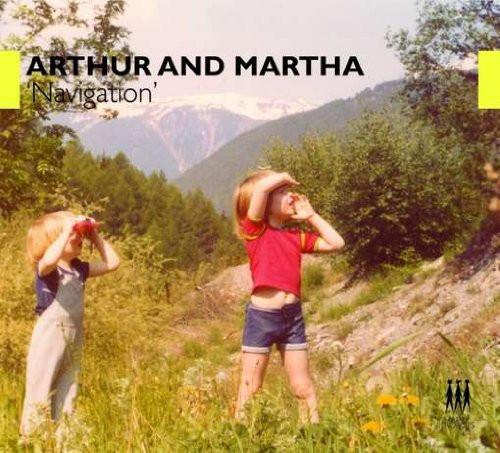
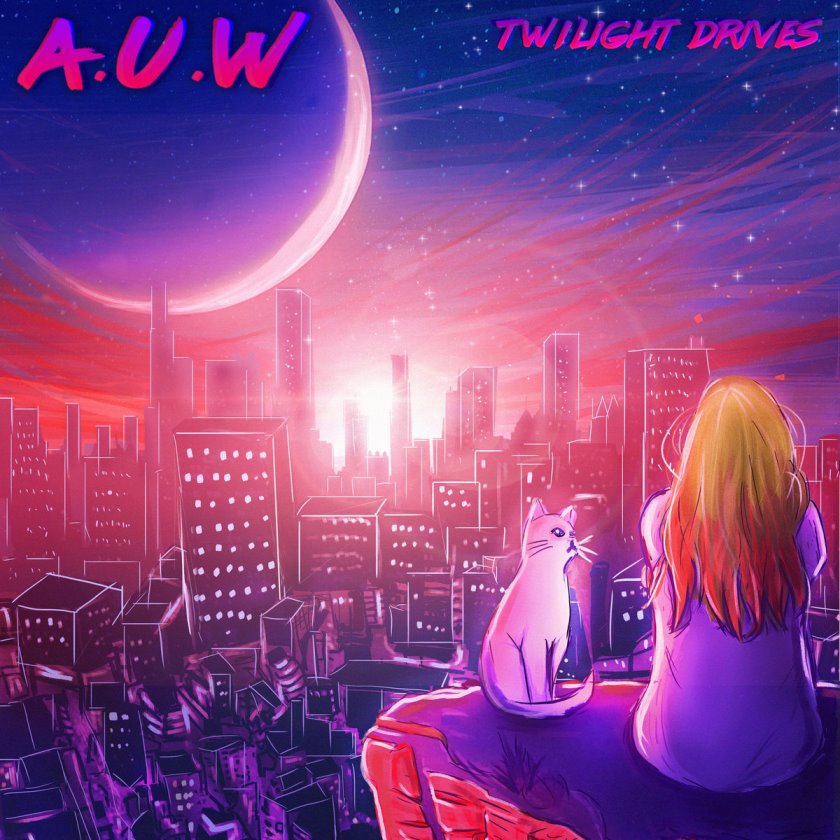
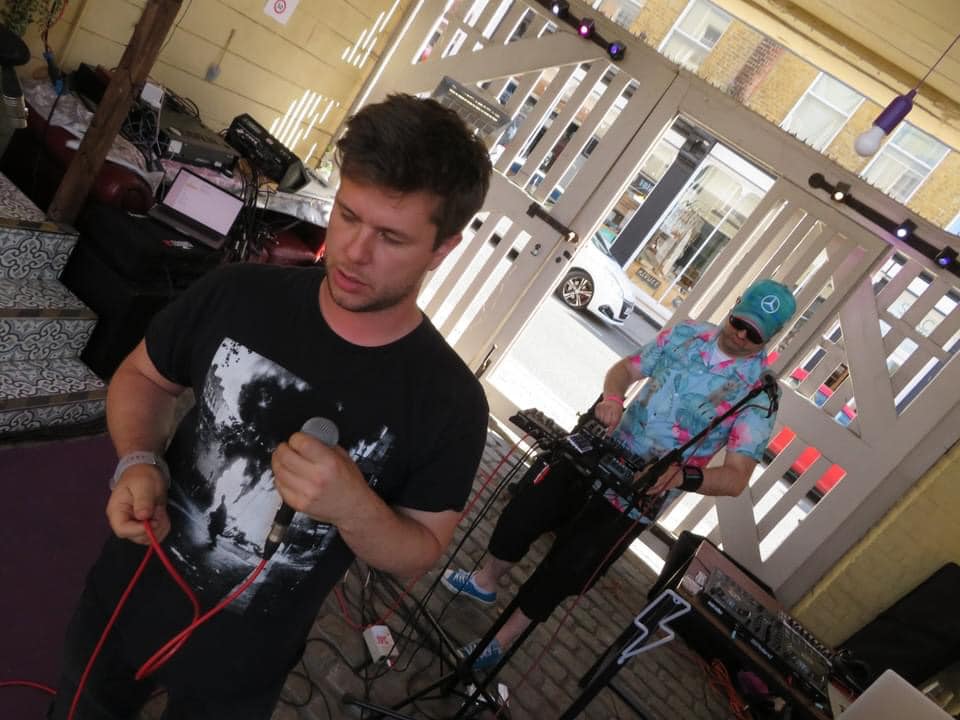
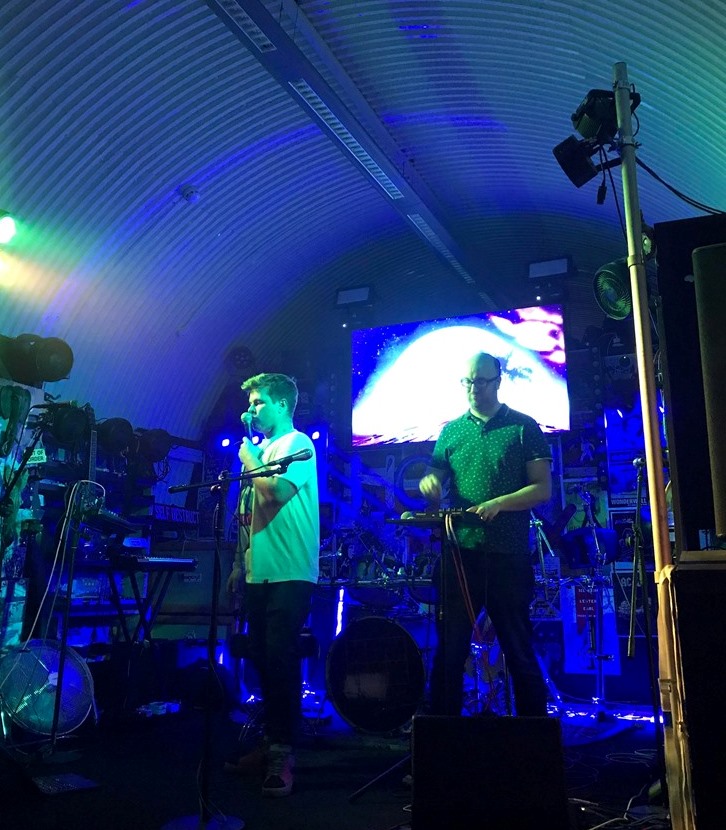
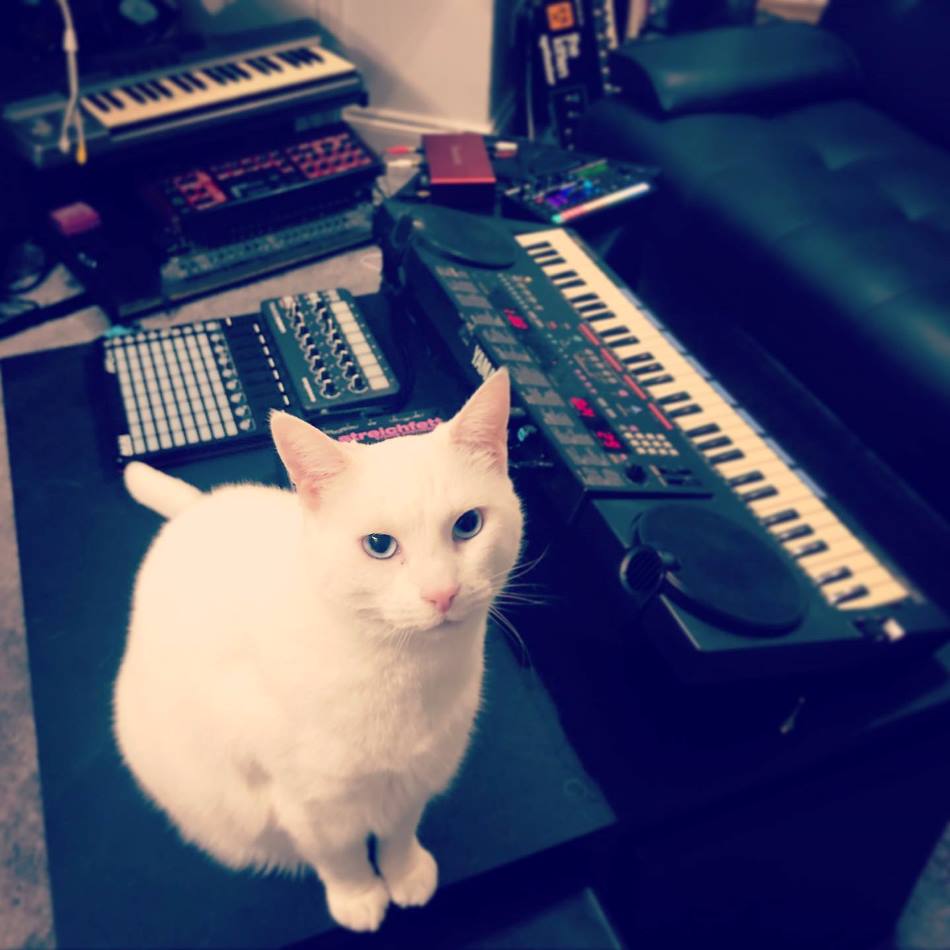
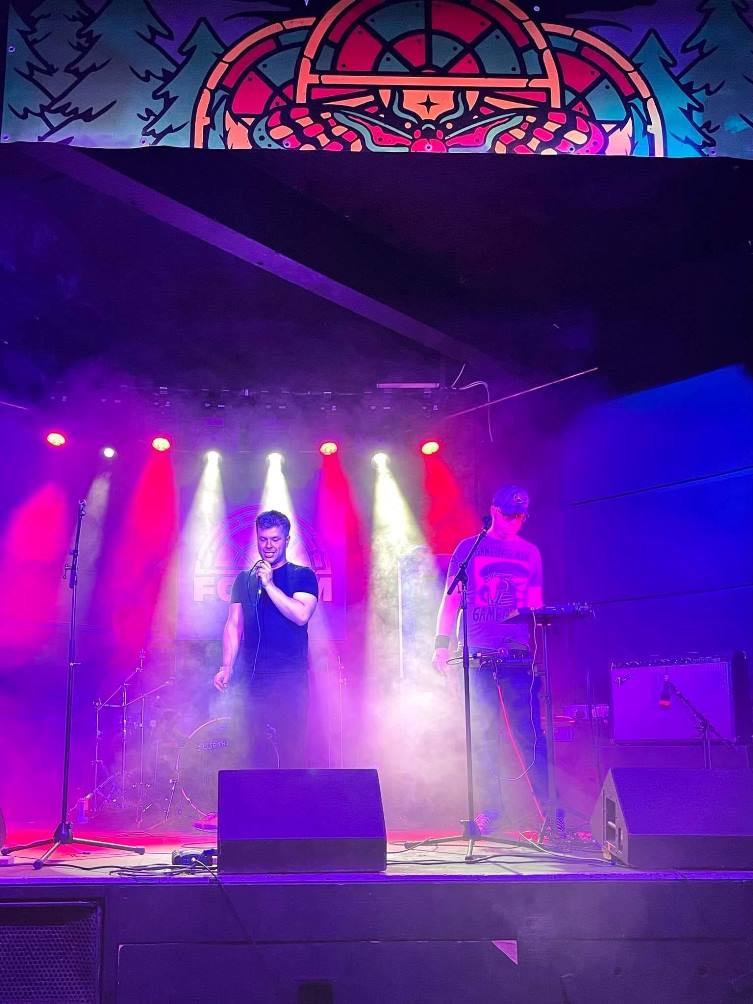
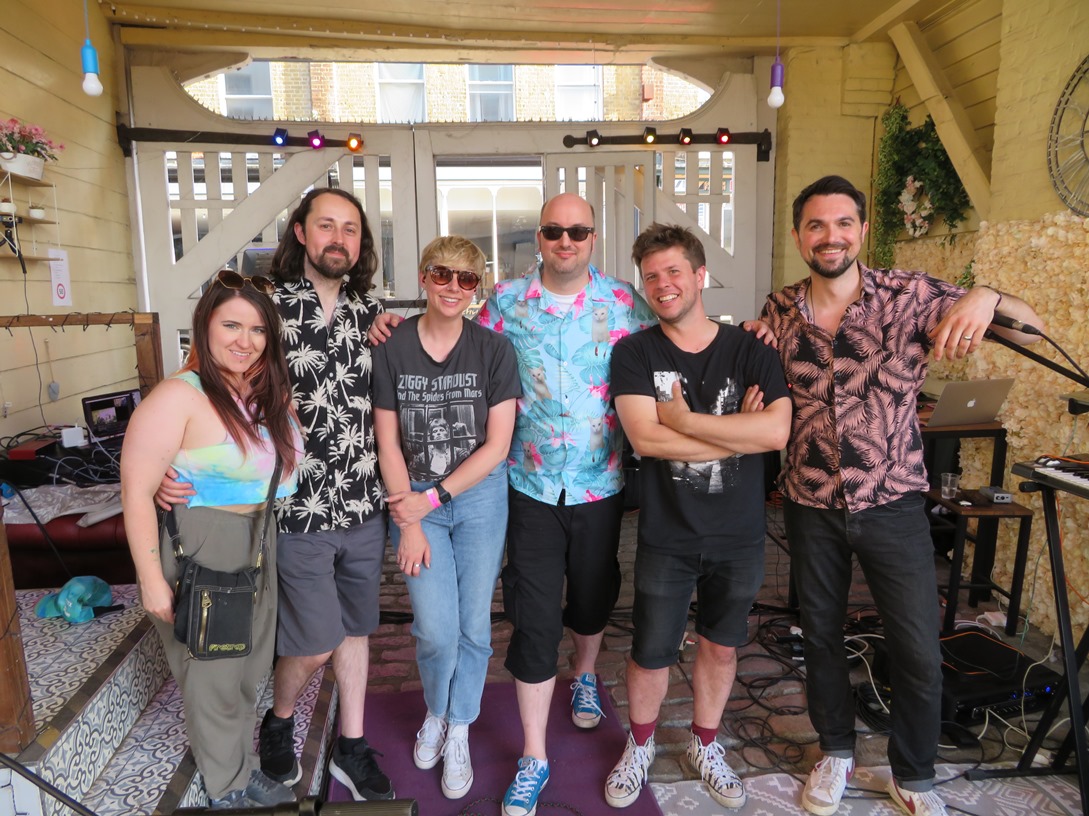
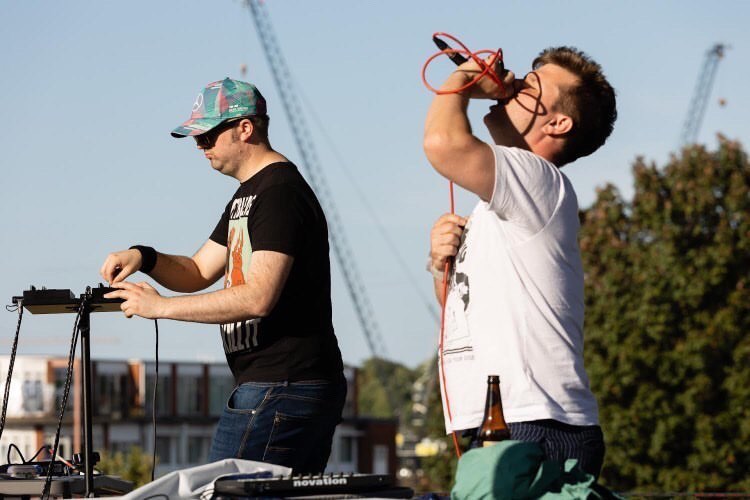
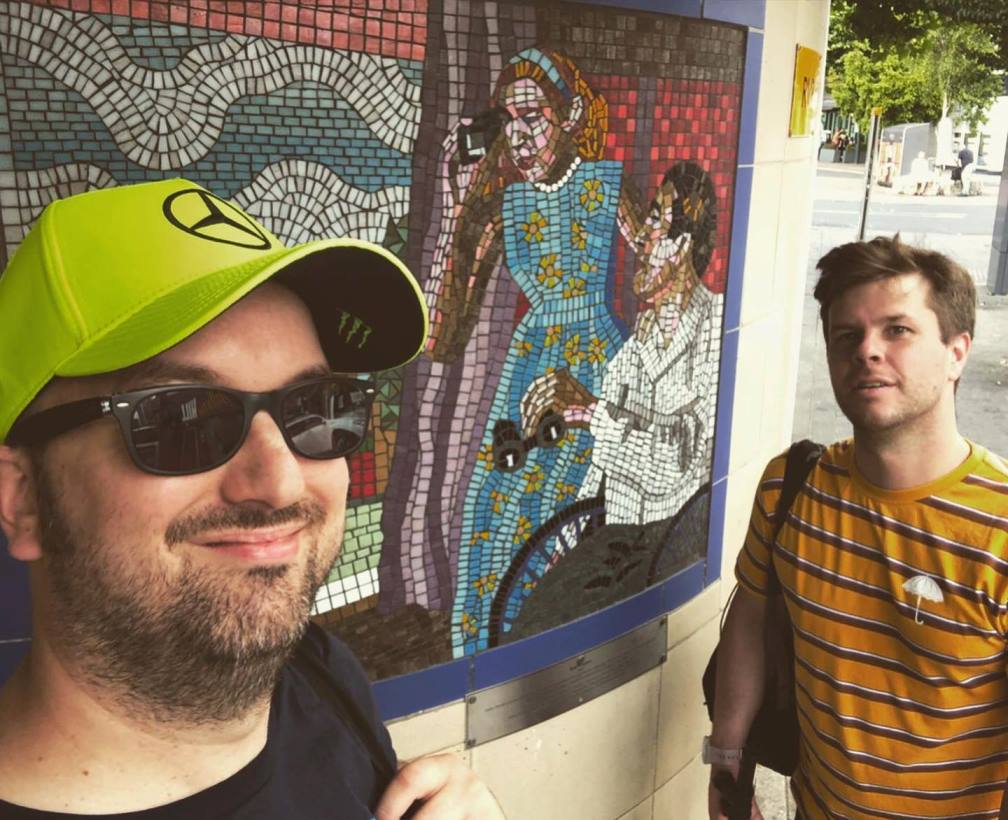















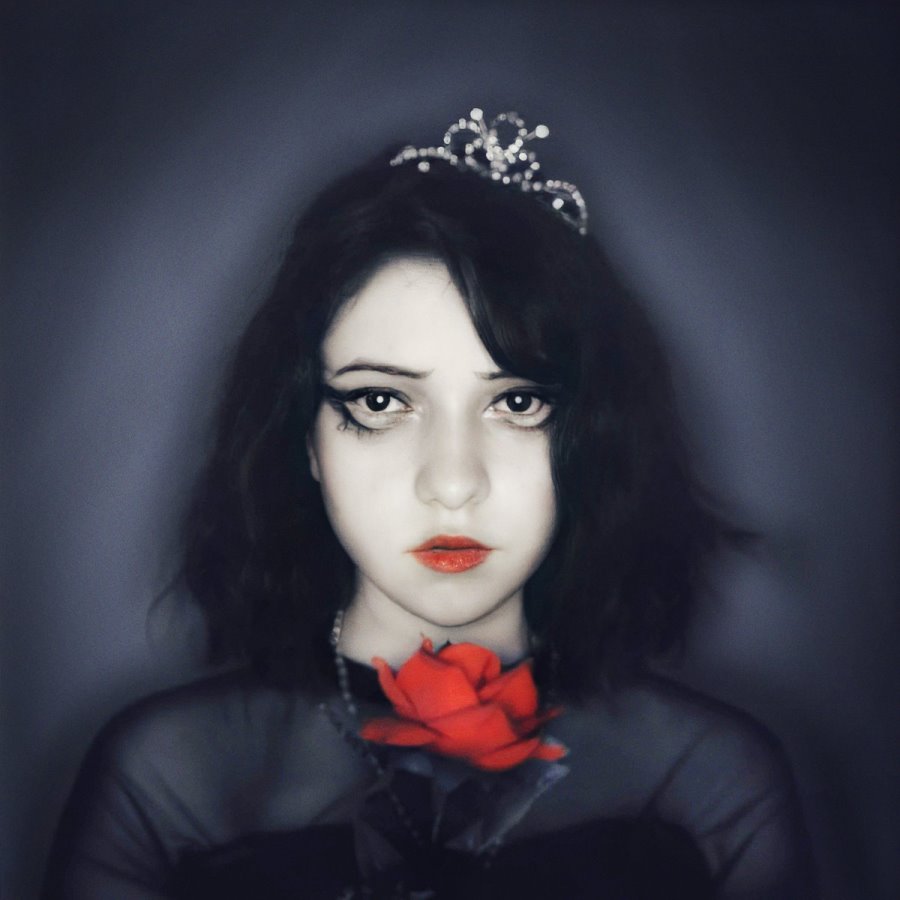
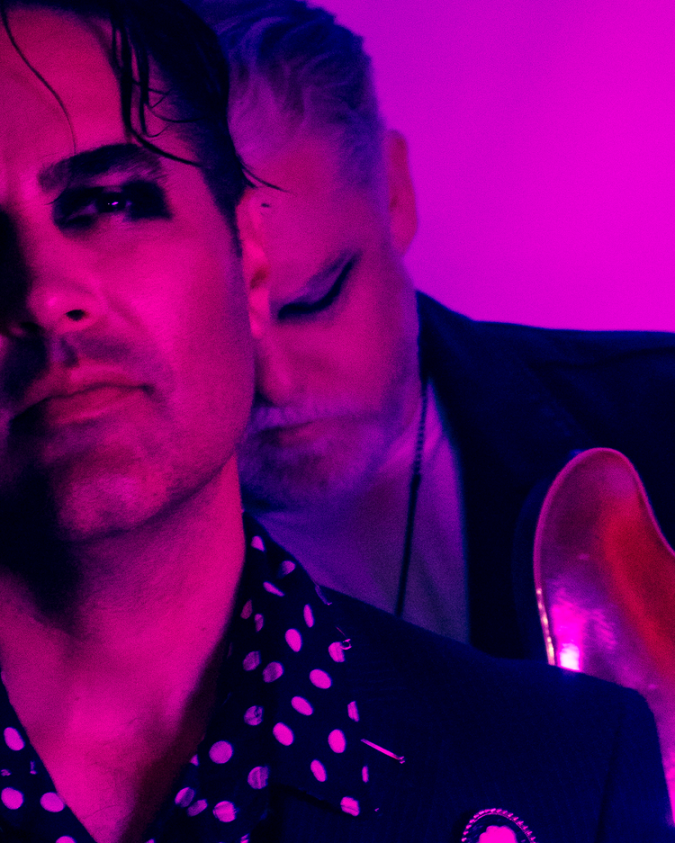
Follow Us!